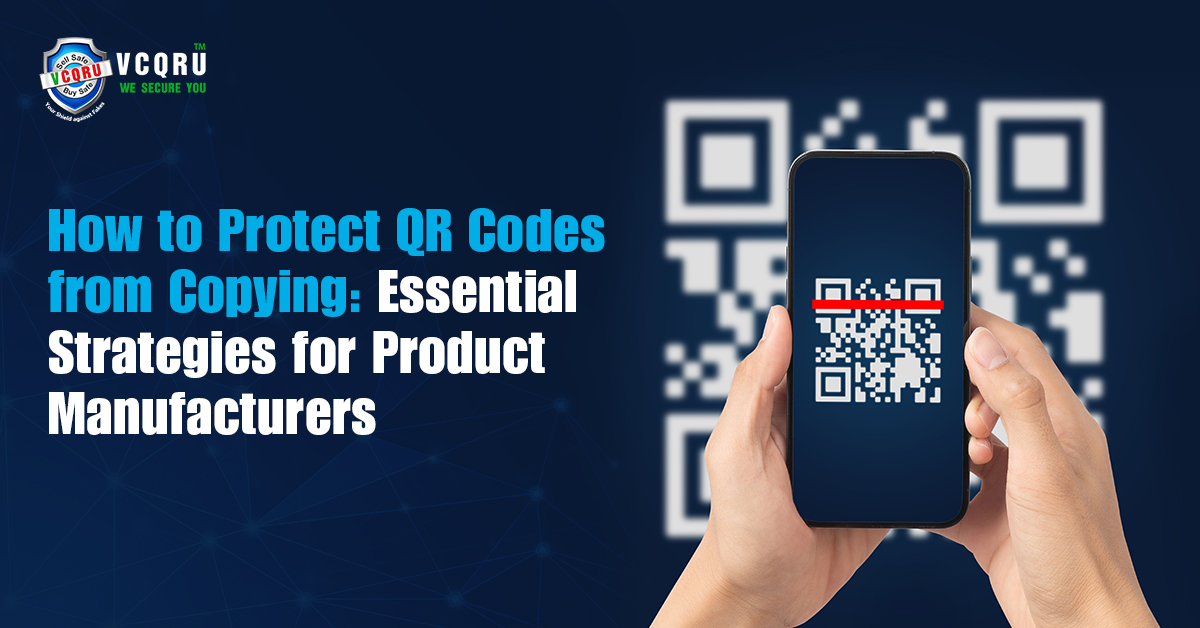How to Protect QR Codes from Copying: Essential Strategies for Product Manufacturers
Aug 12, 2024

In the digital age, QR codes have become an essential tool for product manufacturers that provide an easy way to link to information, verify authenticity, and engage customers. However, as their usage grows, so does the risk of counterfeiting and copying. Protecting QR codes from copying is crucial for maintaining the integrity of your brand and ensuring the trust of your customers. In this guide, we will explore various strategies to safeguard your QR codes effectively.
Understanding the Risks of QR Code Copying
Before diving into protective measures, it’s important to understand why QR code copying poses a significant risk:
Counterfeiting: Duplicate QR codes can be used by fraudsters to create counterfeit products, misleading customers, and damaging your brand’s reputation.
Data Theft: Unauthorized copies of QR codes can lead to the theft of sensitive information.
Customer Misinformation: Copied QR codes can mislead customers to fraudulent websites or incorrect information.
Revenue Loss: Counterfeit products can result in significant revenue loss and increased costs in managing the counterfeit issue.
Implementing Secure QR Code Generation
To start, ensure that your QR codes are generated securely. Use reputable and trusted QR code generators that offer encryption and other security features. Avoid free or unverified generators that may not provide adequate security for this. You can take help from a reputable service provider that helps you to protect your brand and customers from counterfeiters.
Strategies to Protect QR Codes
1. Use Dynamic QR Codes
Dynamic QR codes offer a robust defense against copying. Unlike static QR codes, which contain fixed data, dynamic QR codes allow you to change the content or destination URL even after the code has been printed. This allows you to:
Regularly Change the Content: Update the linked information periodically to render copied codes useless.
Track and Analyze Scans: Monitor scan data to detect unusual patterns that might indicate counterfeiting.
2. Utilizing Encrypted QR Codes
Encryption adds an extra layer of security to your QR codes. Encrypted codes require a key or password to be accessed, Implementing these measures ensures that only authenticated users can scan and use the QR codes.
3. Incorporating Digital Watermarking and Logo Embedding
Digital watermarks or your company logo are invisible markers embedded into QR codes for deter counterfeiters. They provide an additional layer of security by verifying the authenticity of the code. This technique not only makes it more challenging to copy the QR code but also reinforces your brand identity.
Watermarking: Use a subtle, transparent watermark that doesn't interfere with the scan ability of the QR code.
Logo Embedding: Integrate your logo into the center of the QR code, ensuring it remains easily scannable.
4. Utilize Blockchain Technology
Blockchain technology to create an immutable record of each product's QR code. By recording QR code data on a blockchain, you can ensure that any attempt to alter or duplicate the code is immediately detectable. This provides a robust and transparent method for verifying the authenticity of your products.
5. Secure Printing Techniques
Microtext: Incorporating microtext (text that is readable only under magnification) within the QR code can deter replication.
Holograms and Watermarks: Adding holograms or watermarks to the printed QR code can make it harder for counterfeiters to reproduce.
6. Implementing Verification Systems
Develop a verification system that allows customers and partners to check the authenticity of a QR code. This could involve:
Online Verification Portals: Provide a platform where users can scan and verify QR codes.
Mobile Apps: Develop a dedicated app that customers can use to verify the authenticity of your products’ QR codes.
7. Custom QR Code Design
Branding Elements: Integrate unique branding elements like logos, colors, and shapes within the QR code design. This adds an extra layer of security and makes it visually distinct.
Complex Patterns: Use complex patterns and designs that are challenging to replicate without specialized equipment.
8. Anti-Counterfeit Solutions
Tamper-Evident Labels: Use tamper-evident labels that indicate if the QR code has been altered or removed.
Track and Trace Systems: Implement systems that track the product from manufacturing to the end consumer, ensuring the authenticity of the QR code at each stage.
9. Educating Your Customers
Educate your customers about the importance of verifying QR codes. Provide clear instructions on how to check the authenticity of a QR code and what steps to take if they suspect a counterfeit. This can include:
Instructional Guides: Offer printed guides or online tutorials on QR code verification.
Customer Support: Provide a helpline or support service for customers to report suspicious QR codes.
10. Regularly Audit and Monitor QR Codes
Constant vigilance is key to preventing QR code copying. Regularly audit and monitor your QR codes to identify any anomalies.
Audit Trails: Keep detailed records of when and where QR codes are generated and deployed.
Real-Time Monitoring: Use software solutions that provide real-time alerts for suspicious scanning activities.
11. Applying Visual Design Techniques
Enhance the security of your QR codes by incorporating unique visual elements:
Brand Logos: Integrate your brand logo into the QR code design to make it more difficult to replicate.
Custom Patterns: Use custom patterns or colors that are harder to duplicate without compromising scanability.
Holograms and Security Labels: Combine QR codes with holograms or other security labels that are difficult to reproduce.
12. Legal Measures and Trademark Protection
Take legal steps to protect your QR codes and brand.
Trademark Registration: Register your QR codes and related designs as trademarks to gain legal protection against copying.
Cease and Desist Orders: Be prepared to issue cease and desist orders against counterfeiters identified through monitoring and audits.
13. Implementing a Multi-Layered Security Approach
To maximize protection, implement a multi-layered security approach that combines several of the above strategies. For instance, use dynamic and encrypted QR codes printed with secure techniques and backed by blockchain technology. This comprehensive approach will make it significantly more challenging for counterfeiters to replicate your QR codes.


